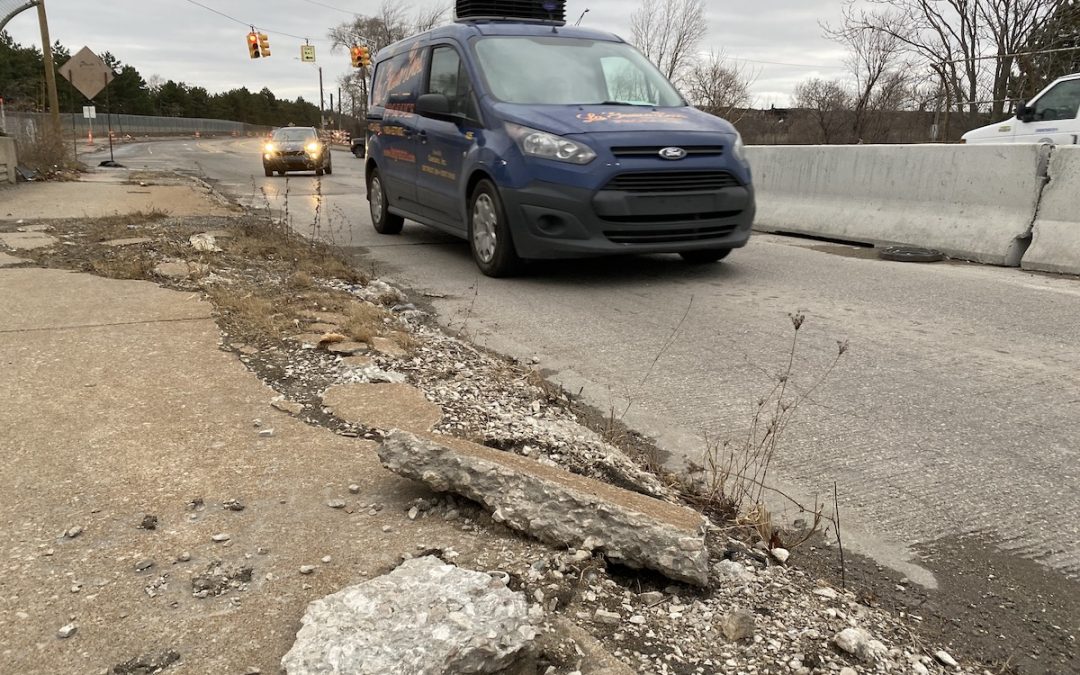The Michigan Department of Transportation intends to close the crumbling Mt. Elliott Street bridge by the end of January as part of a plan to replace four aging bridges over I-94 and I-75 in Detroit this year.
The 65-year-old Mt. Elliott Street bridge, part of which has had driving restrictions due to safety concerns, is slated to be demolished in late February, MDOT spokesman Rob Morosi said.
After that, MDOT’s contractors will tear down the Second Avenue bridge and East Grand Boulevard bridges over I-94, followed by the Milwaukee Street bridge over I-75 later in the spring, Morosi said.
Those Mt. Elliott, Grand Boulevard and Milwaukee bridge projects are part of a $42.7 million contract MDOT plans to award to Milford-based Toebe Construction LLC in a packaged deal.
For the past year, the bridge has had barricades blocking the middle lane of the bridge “due to structural concerns our bridge inspectors had regarding the beams supporting the bridge deck (driving surface) over those lanes,” Morosi said.
Before the Mt. Elliott bridge can be demolished in February, electric and data utilities running underneath the bridge have to relocated and asbestos must be removed, Morosi said.
Commercial truck and passenger vehicles that use the Mt. Elliott bridge will be detoured east to the Van Dyke Avenue bridge over I-94, which was rebuilt in 2013. Grand Boulevard traffic will be detoured to the Chene Street bridge, which was reconstructed in 2018, according to MDOT.
MDOT’s fourth highway overpass replacement project in Detroit this year is the reconstruction of the 66-year-old Second Avenue bridge.
The Second Avenue bridge will be replaced with a tied-arch bridge similar to the I-94 bridge over Telegraph Road, creating a new landmark at the edge of Wayne State University’s campus, Morosi said.
“That bridge is in poor shape,” he said.
Shelby Township-based infrastructure builder Z Contractors Inc. has been awarded a $25.5 million contract to replace the Second Avenue bridge, Morosi said.
The new Second Avenue crossing will feature two lanes for vehicles, wide sidewalks and bicycle lanes to connect the pedestrian and bike-friendly corridor through Wayne State’s campus and connecting to New Center on the north side of the interstate.
This article appeared in Crain’s Detroit Business. Read more here.

